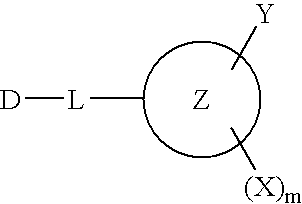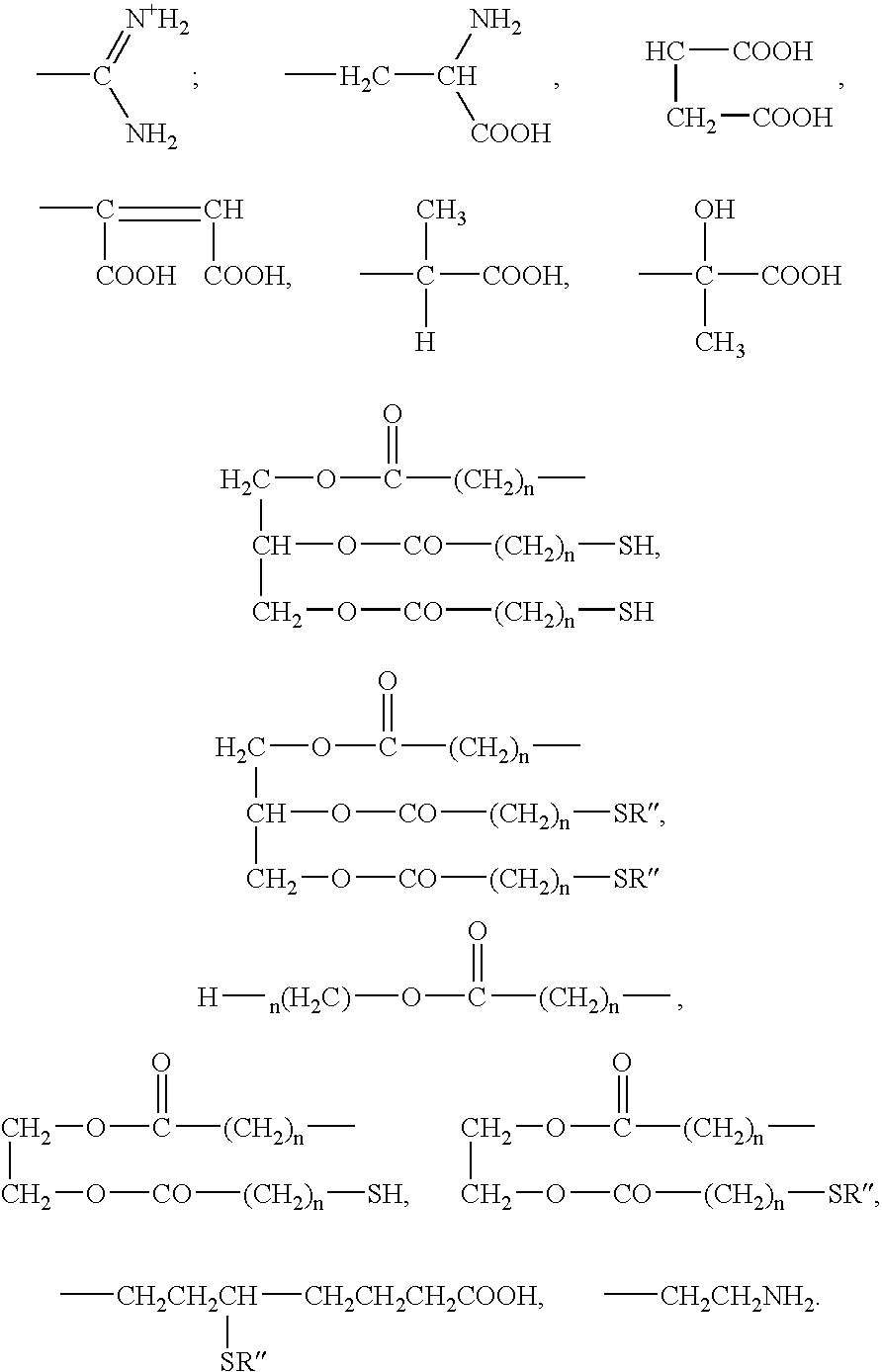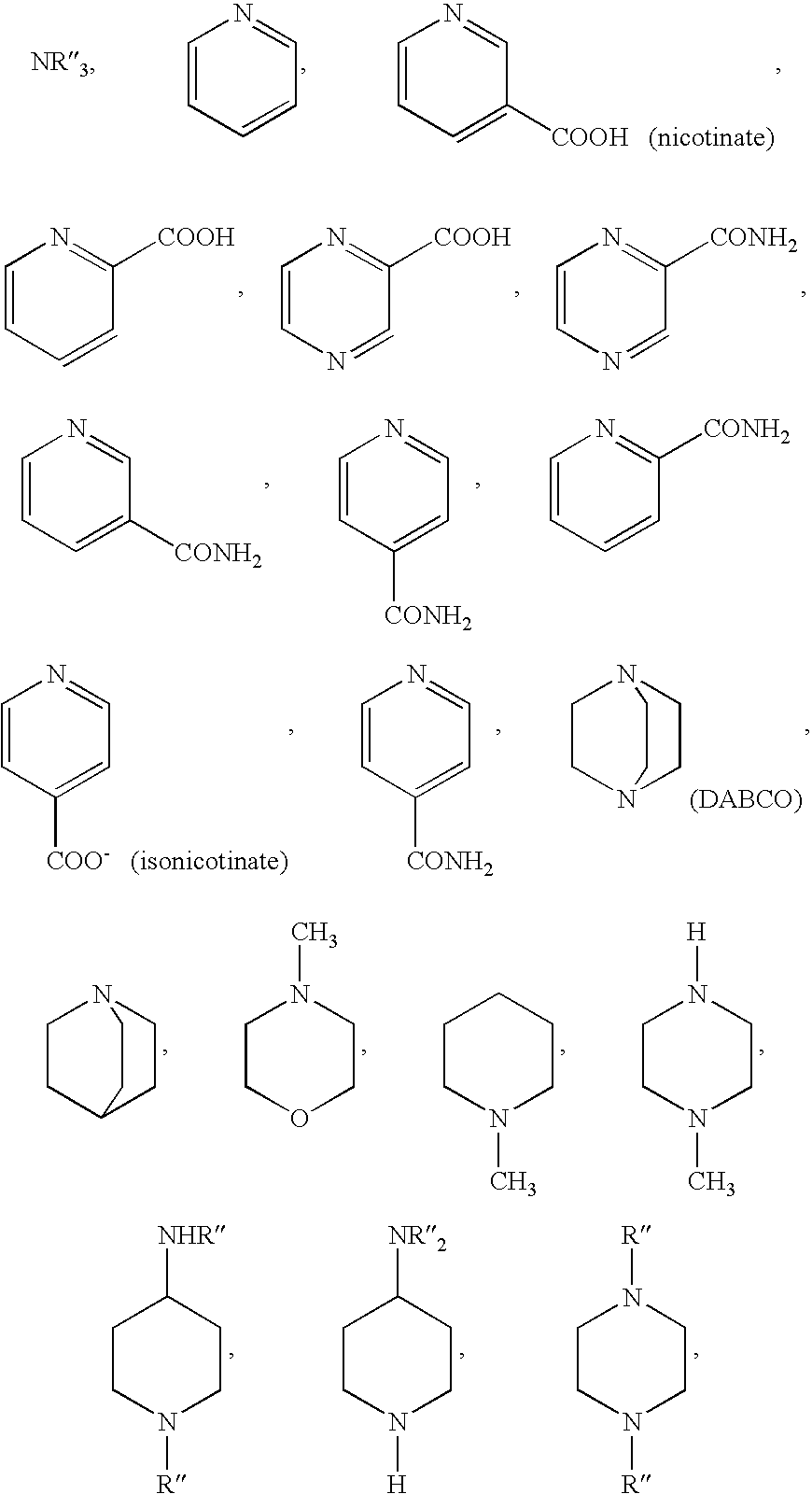Reactive dye compounds
a dye compound and dyeing technology, applied in the direction of dyeing process, chemistry apparatus and processes, hair cosmetics, etc., can solve the problem of significant amount of dyestuff material remaining, and achieve the effect of increasing dye affinity to the substrate, reducing waste, and increasing exhaustion
- Summary
- Abstract
- Description
- Claims
- Application Information
AI Technical Summary
Benefits of technology
Problems solved by technology
Method used
Image
Examples
example 1
0.005 moles of Procion Yellow MX-3R dye is dissolved in 150 ml of distilled water in a 400 ml flask. The temperature of the reaction system is adjusted and maintained at 0-5° C. The pH of the starting dye solution is adjusted to 5-5.5 using solid sodium carbonate. 0.005 moles of aceto diphosphonic acid (Briquest ADPA 60A) is dissolved in 50 ml of distilled water. The pH of this aceto diphosphonic acid solution is adjusted to around 4.5. The aceto diphosphonic acid solution is slowly added into the solution of Procion Yellow MX-3R dye. The rate of addition is such that the addition takes around 2 hours to complete. During the process of addition the temperature of the reaction system is maintained at 0-5° C. After addition of the aceto diphosphonic acid solution is complete, the reaction is allowed to continue for 4-5 hours. The endpoint of the reaction is indicated by the pH of the reaction system remaining constant for more than 5 minutes. At this point the final dye is obtained. U...
example 2
4 g of Levafix Goldgelb EG dye is dissolved in 150 ml of distilled water in a 400 ml flask. The temperature of the reaction system is adjusted and maintained at 60-65° C. The pH of the starting dye solution is adjusted to 4.5-5 using solid sodium carbonate. 1 g of aceto diphosphonic acid (Briquest ADPA 60A) is dissolved in 50 ml of distilled water. The pH of this aceto diphosphonic acid solution is adjusted to around 3-3.5. The aceto diphosphonic acid solution is slowly added into the solution of Levafix Goldgelb EG dye. The rate of addition is such that the addition takes around 3-4 hours to complete. During the process of addition the temperature of the reaction system is maintained at 60-65° C. After addition of the aceto diphosphonic acid solution is complete, the reaction is allowed to continue for 1-2 hours. The endpoint of the reaction is indicated by the pH of the reaction system remaining constant for more than 5 minutes. At this point the final dye is obtained. Using 6N HC...
example 3
0.005 moles of Drimalan Yellow FR dye is dissolved in 150 ml of distilled water in a 400 ml flask. The temperature of the reaction system is adjusted and maintained at 35-40° C. The pH of the starting dye solution is adjusted to 4.5-5 using solid sodium carbonate. 0.005 moles of aceto diphosphonic acid (or 2-hydroxyethane, 1,1-diphosphonic acid, Briquest ADPA 60A) is dissolved in 50 ml of distilled water. The pH of this aceto diphosphonic acid solution is adjusted to around 4.5. The aceto diphosphonic acid solution is slowly added into the solution of Drimalan Yellow FR dye. The rate of addition is such that the addition takes around 2 hours to complete. During the process of addition the temperature of the reaction system is maintained at 35-40° C. After addition of the aceto diphosphonic acid solution is complete, the reaction is allowed to continue for 4-5 hours. The endpoint of the reaction is indicated by the pH of the reaction system remaining constant for more than 5 minutes....
PUM
| Property | Measurement | Unit |
|---|---|---|
| Time | aaaaa | aaaaa |
| Time | aaaaa | aaaaa |
| Acidity | aaaaa | aaaaa |
Abstract
Description
Claims
Application Information
 Login to View More
Login to View More - R&D
- Intellectual Property
- Life Sciences
- Materials
- Tech Scout
- Unparalleled Data Quality
- Higher Quality Content
- 60% Fewer Hallucinations
Browse by: Latest US Patents, China's latest patents, Technical Efficacy Thesaurus, Application Domain, Technology Topic, Popular Technical Reports.
© 2025 PatSnap. All rights reserved.Legal|Privacy policy|Modern Slavery Act Transparency Statement|Sitemap|About US| Contact US: help@patsnap.com



